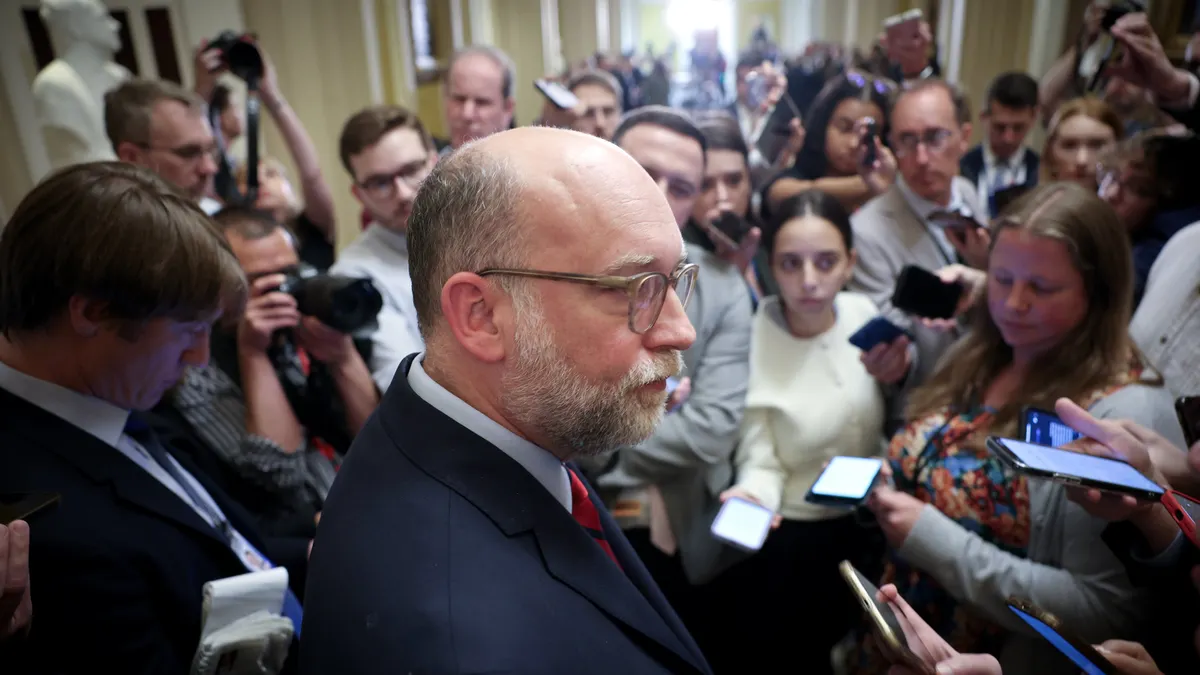WASHINGTON — The U.S. Equal Employment Opportunity Commission (EEOC) received perhaps its biggest call to action while it was mid-transition into a new administration. But while leadership nominees are still waiting for Senate confirmation, the EEOC has already been hard at work in a post-#MeToo world, Victoria Lipnic, acting chair, told attendees at the agency's EXCEL Training Conference Wednesday.
"I now date my life pre-Weinstein story and post-Weinstein story," Lipnic said, "because we are in many ways all harassment, all the time."
Behind the scenes, the EEOC has been grappling with a massive charge backlog (which Congress has asked to be solved for at least 25 years, she noted) and shifting technology, on top of the usual changes that come with a new administration.
But despite the challenges, the EEOC has strived to take advantage of a cultural moment and galvanize the fight against discrimination and harassment, fellow Commissioner Chai Feldblum said during the morning plenary session.
Waiting on new leadership
There's no word yet on when or whether Daniel Gade or Janet Dhillon, President Donald Trump's EEOC nominees, will go through the confirmation process. Dhillon was nominated as chair back in June 2017 (to replace Lipnic, who would then return to commissioner status), while Gade has been on deck since August 2017. Feldblum also is up for reappointment, a December 2017 move that created some confusion among stakeholders.
The commission has been functioning with a skeleton crew at the top, with two commissioner spots and the general counsel position still unfilled. If confirmed, Trump's nominees would create a Republican majority at the commission under Dhillon’s leadership and could change the agency's strategy and focus. Good luck figuring out when that will happen, though, Lipnic joked: "If you can predict the Senate floor schedule, you are better than I am."
Age discrimination is everywhere
The work doesn’t stop, even as Congress stalls, EEOC officials made clear. A few weeks ago, the commission released a new report, "The State of Age Discrimination and Older Workers in the U.S.," culminating its year-long reflection on ageism 50 years after the Age Discrimination in Employment Act took effect. Calling ageism the "silent, open secret in too many of our workplaces," Lipnic recommended a number of best practices, including emphasizing age-diverse work teams and including age in diversity programs.
"Don’t get caught up on the 10,000 boomers retiring a day statistic," Lipnic said. Many boomers are not financially prepared for or interested in retirement, she added — and boomers are not the only generation that's aging gracefully. Leading edge Gen Xers are now in their early 50s. If the average person nowadays changes jobs at least 11 times, it’s likely many will be searching for a new job while in their 50s — "a whole different experience than looking for a job in your 40s," Lipnic said.
A general rule of thumb offered during the session: If you think assumptions about age are not issues in your workplace, think again.
Action items on harassment
Harassment, particularly sex harassment, was a hot topic throughout the EXCEL conference. But while its cultural impact is more widely discussed now, the topic is nothing new for EEOC.
"This came as no surprise to those of us at EEOC, especially those of us in this room," Lipnic said of the #MeToo movement. "The good thing about this, if there is a good thing to say about it, is that at EEOC, we were prepared."
EEOC originally held a breakout session on harassment in August 2015, followed up by the formation of a task force in 2016. Fast-forward to the end of 2017, "and the cultural awakening and cultural reckoning began," Lipnic said.
"The question is whether we can and whether we will leverage this moment to create significant and sustainable change in stopping harassment," Feldblum said. And not just gender-based harassment: the number of racial harassment claims is nearly equal to sex harassment claims, the commissioners added.
Feldblum, in particular, charged workplace leaders with heavy responsibility. Leaders actually have to believe harassment is wrong and that they don’t want it in their workplace, she said. They also have to articulate that value. Do not underestimate the value of words, Feldblum said. It matters if leaders remind people about the written policy against harassment at an all-hands meeting, for example. Finally, leaders have to act in a way to make employees believe they are authentic.
Organization leaders also should make clear to HR that its often-cited task of "protecting the employer" means taking complaints seriously, Feldblum said. In turn, HR managers should be supported when they do take complaints seriously and launch an investigation.
And as always, HR should create a clear, accessible policy — but be careful of leaning too far in any single direction. "A lot of people like to use the term 'zero-tolerance policy.' What we like about that is that there will be zero tolerance for bad behavior," Feldblum said. It should not mean, however, that every act of misconduct results in the same consequence.
A strong policy, in general, should be short, easy to understand and clear; be available in different languages; and not use excessively legal language.
In some cases, companies may need "a complete restart" when creating these policies. An HR manager may need 25 pages on procedures, but an employee doesn't need to know all of that, Feldblum said.
"What we can do now, I believe, is channel that energy together to create significant and sustainable change," Feldblum said, reflecting on one of the themes of the conference: action. "So let's just do it."




















